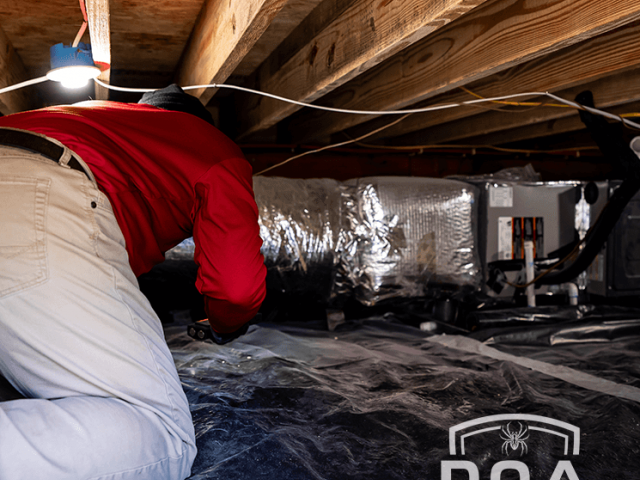How Termites Devour Wood Structures
Termites are small, silent destroyers capable of causing significant structural damage long before homeowners notice the signs. Their ability to feed continuously, often undetected, makes them one of the most destructive pests in the world. Understanding how termites consume wood structures and how professional termite control works is essential for protecting your property from costly repairs and long-term damage.
This guide explores how termites operate, why wood is their preferred food source, and what steps can be taken to identify and prevent infestations effectively.

The Hidden Threat Beneath the Surface
Termites thrive in moist environments where they can easily access cellulose, the organic compound found in wood, paper, and plant materials. Because cellulose is their primary source of nutrition, any structure containing wooden components becomes a potential target.
Unlike other pests that leave visible damage, termites feed from the inside out. They tunnel through walls, beams, and flooring while leaving the surface intact, making detection difficult. As their colonies expand, the internal integrity of wood weakens until it eventually collapses under pressure.
Termites are social insects that live in large colonies. These colonies contain distinct castes (workers, soldiers, and reproductives), each playing a specific role in the colony’s survival. Workers are the primary culprits behind wood destruction, tirelessly feeding and transporting nutrients back to the nest.
Early detection is critical. Once structural damage becomes visible, it often means termites have been active for months or even years. Regular inspections and moisture management significantly reduce the chances of large-scale infestations.
How Termites Break Down Wood
Wood may seem solid and durable, but for termites, it is an accessible food source filled with nutrients they can digest with the help of specialized microorganisms. The process of consuming and breaking down wood is a fascinating example of biological adaptation.
Here is how termites digest wood:
- Enzymatic Breakdown: Termites host symbiotic protozoa and bacteria in their digestive systems. These microorganisms produce enzymes that break cellulose into simple sugars that termites can absorb.
- Moisture Dependence: Termites rely on humidity to survive and to soften the wood fibers they consume. This is why damp or water-damaged wood attracts them more readily.
- Continuous Feeding: Colonies feed around the clock. Because their digestive systems are designed for constant cellulose processing, they never stop consuming once they find a viable source.
Over time, their tunnels and galleries weaken load-bearing beams and other structural components. Even small infestations can lead to thousands of dollars in damage if not addressed promptly.
An important consideration for homeowners is that termite damage can also reduce overall property value. A closer look at how pest infestations impact property worth shows that untreated termite activity can lead to costly depreciation over time.
Common Signs of Termite Damage
Identifying termites early can be challenging, but there are key indicators homeowners should watch for. Recognizing these warning signs helps prevent deeper structural damage.
Watch for the following:
- Hollow or Soft Wood: Tapping wood that sounds hollow indicates internal tunneling.
- Mud Tubes: Termites build these pencil-sized tubes along walls or foundations to maintain moisture while traveling between their nests and food sources.
- Swarming Insects: Winged reproductive termites, or swarmers, appear during mating seasons and often indicate a nearby colony.
- Discarded Wings: After mating, swarmers shed their wings, which are usually found near windowsills or light fixtures.
- Blistered Paint or Bubbling Surfaces: Moisture buildup caused by termite activity can cause wood or paint to bubble or peel.
While these signs may seem minor, they often point to more extensive internal damage. Professional termite control specialists can use advanced tools such as moisture meters and thermal imaging to detect hidden colonies.
The Importance of Termite Control and Prevention
Once termites are established, DIY solutions rarely eliminate them completely. Store-bought treatments may kill visible termites but fail to reach deep colonies hidden inside walls or underground tunnels. Comprehensive termite control requires professional-grade products, equipment, and expertise.
Professionals typically implement a multi-step strategy that includes:
- Inspection: Evaluating the entire structure for entry points, moisture problems, and colony activity.
- Soil Treatment: Applying termiticides around the foundation to create a protective barrier that blocks entry and kills termites upon contact.
- Wood Treatment: Treating existing wooden structures with specialized products that penetrate deep into the material to prevent future infestations.
- Monitoring Systems: Installing bait or monitoring stations to detect termite activity early and provide long-term protection.
- Moisture Management: Reducing humidity and fixing leaks that attract termites.
Consistent prevention efforts are as important as treatment. Regular inspections and structural maintenance prevent reinfestation and protect against secondary damage. Homeowners can prepare effectively for the seasonal increase in pest activity by following expert guidance, such as preparing homes for fall pests, which outlines proactive measures to safeguard living spaces.
Why Professional Expertise Matters
Termites are highly adaptive and persistent, capable of rebuilding colonies even after partial elimination. Professional pest experts understand their behavior and use evidence-based techniques to ensure complete eradication.
Professionals also tailor treatment plans to match the type of termites involved, whether subterranean, drywood, or dampwood species. Each requires a different control method, and improper treatment can allow infestations to return.
Advanced termite control solutions prioritize safety and environmental care. Licensed technicians use regulated products that target termites effectively without posing harm to people, pets, or property. Their training ensures precise application that eliminates existing colonies while preventing future ones from forming.
For homeowners, professional assistance offers peace of mind. It ensures that inspections are thorough, treatments are effective, and structural safety is restored before major damage occurs.
Protect Your Home from Silent Invaders
Termites may be small, but their impact is anything but. Early action and consistent prevention are key to keeping your home protected. Whether you suspect an active infestation or simply want to strengthen your home’s defenses, expert help ensures that the job is done right.To schedule an inspection or learn more about effective solutions, contact DOA Pest Service. Our specialists provide comprehensive termite control strategies that keep your property strong, secure, and pest-free year-round.









